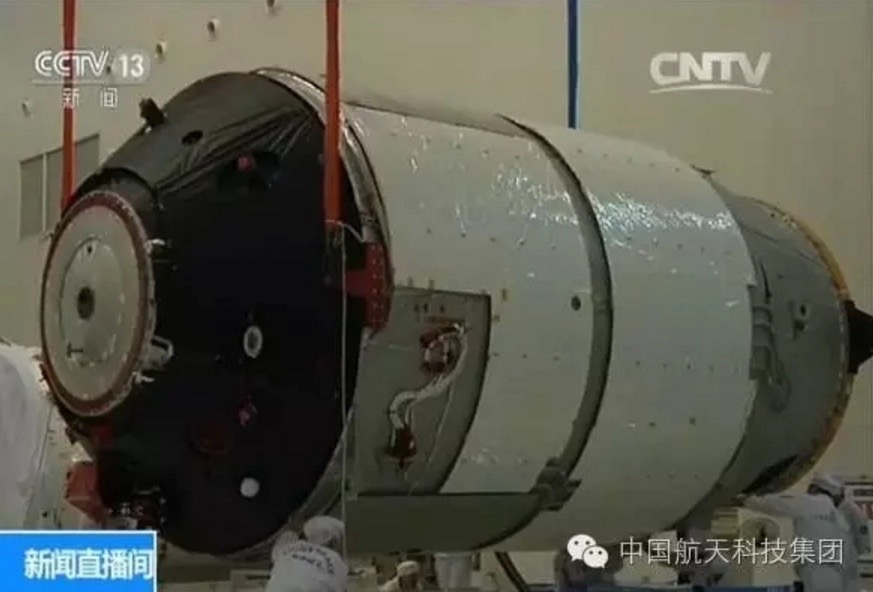
China Readies Next Space Lab for September Launch

It's an important year for China's burgeoning human spaceflight program.
Chinese news agencies report that the country's second orbiting space lab — Tiangong-2 — was delivered over the weekend by rail from Beijing to the Jiuquan Satellite Launch Center, about 1,000 miles (1,600 kilometers) away in the Gobi Desert.
According to a statement from China's manned space engineering office, the vessel will undergo assembling and testing processes at the center in preparation for its mid-September launch.
Tiangong-2 will be China's second orbiting space lab, and it will eventually be visited by two astronauts onboard the Shenzhou-11 spacecraft. (China's first space lab, Tiangong-1, launched in September 2011 and hosted crewed dockings in June 2012 and June 2013. Tiangong-1's operational life is now over, and the space lab is expected to fall back to Earth relatively soon.)
Check out these two videos, which show how technicians and engineers are getting Tiangong-2 and its Long March 2 F rocket ready for the upcoming launch:
http://www.cctvplus.com/news/20160710/8026553.shtml
http://www.cctvplus.com/news/20160711/8026573.shtml
Get the Space.com Newsletter
Breaking space news, the latest updates on rocket launches, skywatching events and more!
Early next year, a Long March 7 rocket will loft a Tianzhou supply ship to the Tiangong-2 space lab.
Also on tap this year is the maiden blastoff of China's Long March 5 rocket. This booster is eventually scheduled to launch space station modules into Earth orbit, help get moon samples to Earth and blast a rover toward Mars in 2020, Chinese officials have said.
Test capsule
Late last month, the first Long March 7 launched from the country's new Kennedy Space Center-like Wenchang coastal spaceport.
The Long March 7 carried mini-satellites, as well as a sub-scale test capsule for future piloted space missions in low Earth orbit and deep space. That 2.87-ton (2.6 metric tons) re-entry module parachuted to a landing in Badain Jaran Desert in north China.
Prior to the capsule's landing, the re-entry module spent about 20 hours in orbit.
Leonard David is the author of "Mars: Our Future on the Red Planet," to be published by National Geographic this October. The book is a companion to the National Geographic Channel six-part series coming in November. A longtime writer for Space.com, David has been reporting on the space industry for more than five decades. Follow us @Spacedotcom, Facebook or Google+. Published on Space.com.
Join our Space Forums to keep talking space on the latest missions, night sky and more! And if you have a news tip, correction or comment, let us know at: community@space.com.

Leonard David is an award-winning space journalist who has been reporting on space activities for more than 50 years. Currently writing as Space.com's Space Insider Columnist among his other projects, Leonard has authored numerous books on space exploration, Mars missions and more, with his latest being "Moon Rush: The New Space Race" published in 2019 by National Geographic. He also wrote "Mars: Our Future on the Red Planet" released in 2016 by National Geographic. Leonard has served as a correspondent for SpaceNews, Scientific American and Aerospace America for the AIAA. He has received many awards, including the first Ordway Award for Sustained Excellence in Spaceflight History in 2015 at the AAS Wernher von Braun Memorial Symposium. You can find out Leonard's latest project at his website and on Twitter.









